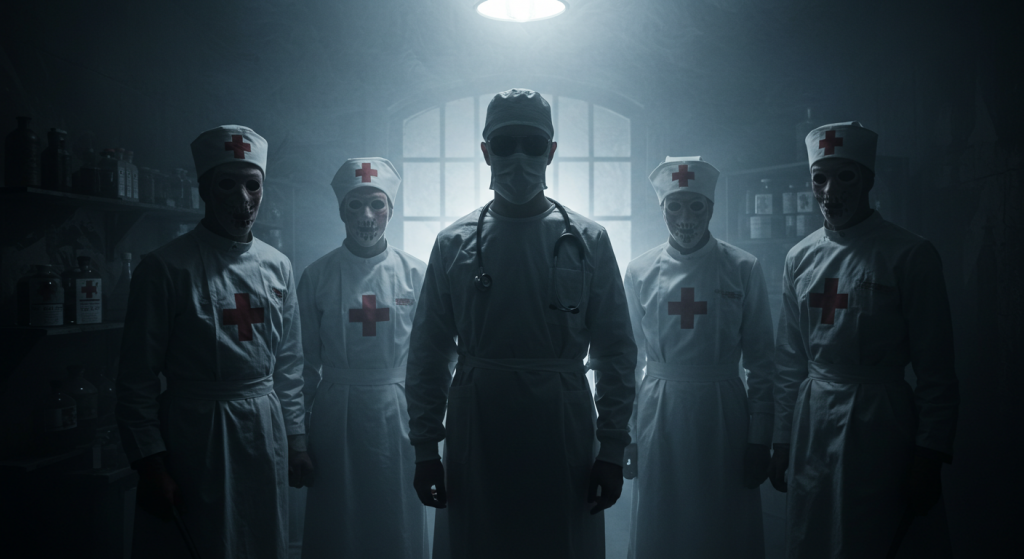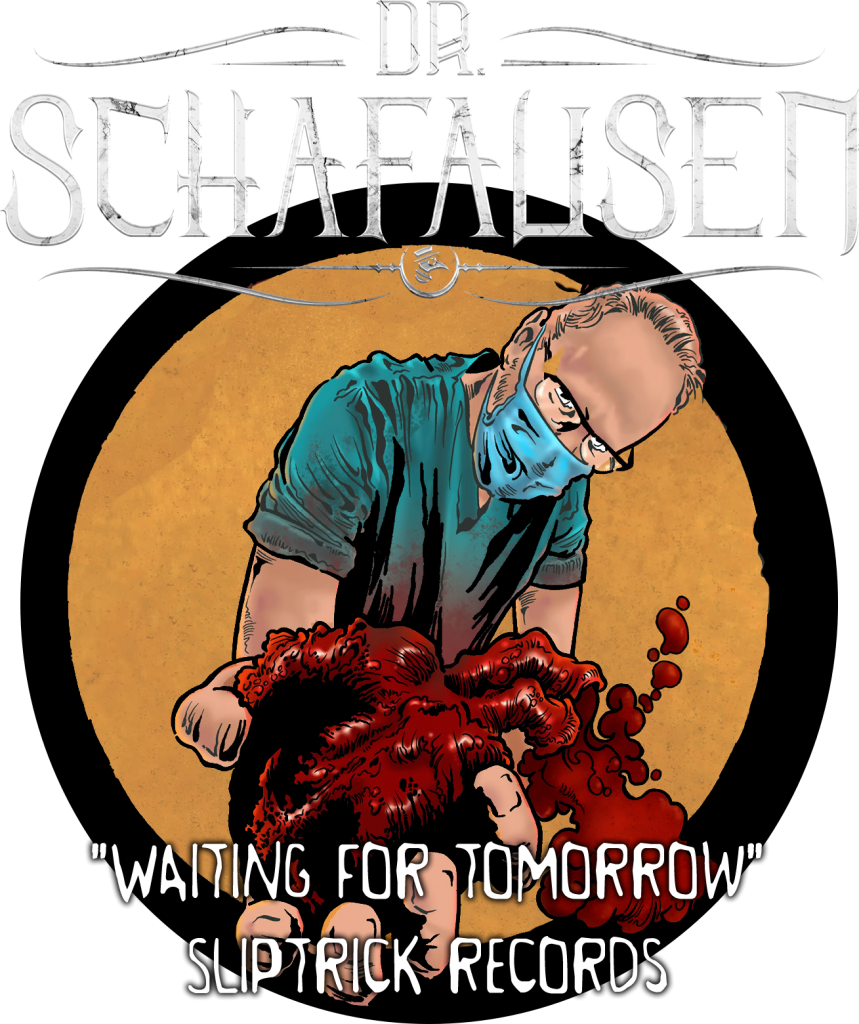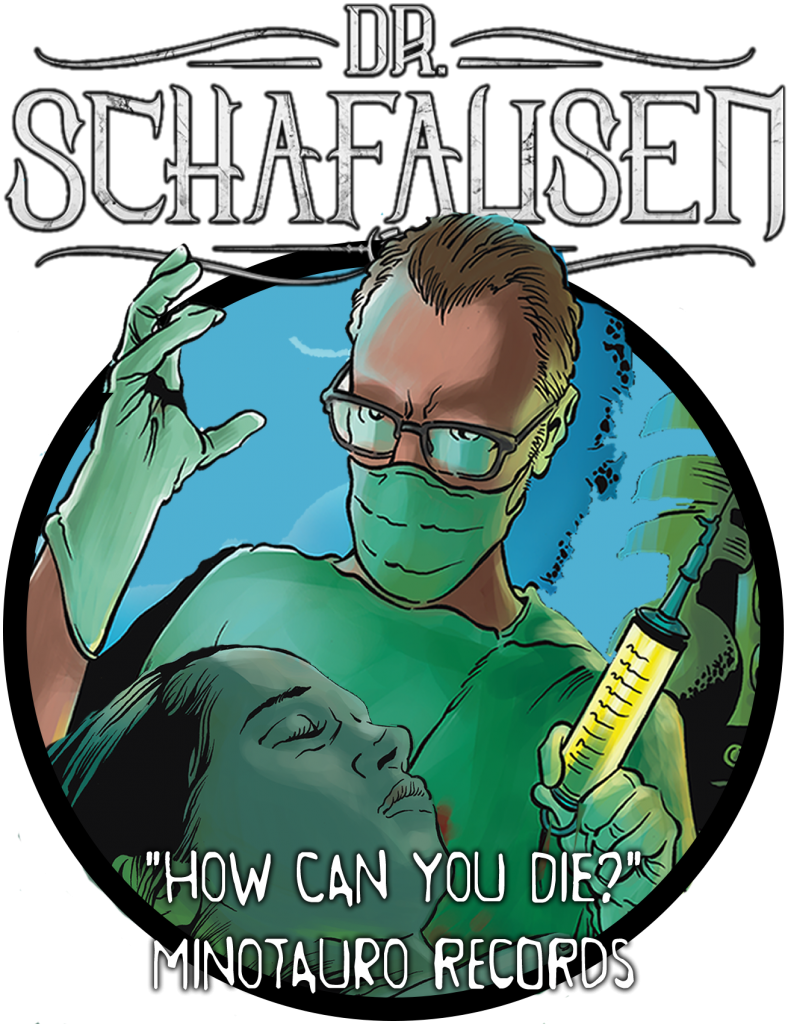Dr. Schafausen is ready to unveil the first details of his new concept album: Psychiatric Dark Hotel. A work that plunges us into the nightmare of a dystopian psychiatric hospital, where reality and madness blur into one dark, twisted realm. In this “hotel,” the lyrics give voice to patients trapped within their own minds, caught in a spiral of delusion, isolation, and despair. The sound—already known for its intensity—grows even darker and more oppressive: saturated, razor-sharp guitars, deep, growling bass lines, relentless drumming, and haunting atmospheres generate a constant sense of emotional tension.
The sonic landscape of Psychiatric Dark Hotel is urban, claustrophobic, and ever-evolving. Reality fractures, giving way to hallucinated visions and shattered mental spaces. Violent passages alternate with introspective, cinematic moments, building a journey that is both deeply personal and universally unsettling….
With this release, Dr. Schafausen goes beyond the boundaries of a traditional album, crafting a full-blown sensory experience—a sonic dystopia that forces the listener to confront their deepest fears.
An unmissable opus that pushes metal to its outer limits, solidifying Dr. Schafausen as one of the most daring and innovative artists in the Italian metal scene.




Dystopian societies are often characterized by dehumanization, oppressive governments, environmental disaster, and other catastrophic elements that signify a decline in society. These societies are commonly featured in works of fiction and artistic representations, particularly those set in the future. Some of the most iconic examples include Aldous Huxley's "Brave New World" (1932), George Orwell's "Nineteen Eighty-Four" (1949), and Ray Bradbury's "Fahrenheit 451" (1953). Dystopian societies appear in various sub-genres of fiction and are frequently utilized to draw attention to societal issues such as the environment, politics, economics, religion, psychology, ethics, science, or technology. Some authors use the term to refer to existing societies that have already experienced a significant level of collapse or those on the brink of it. Overall, dystopian societies serve as cautionary tales, warning us of the potential consequences of unchecked power, ignorance, and complacency. By examining these societies and their characteristics, we can gain a greater understanding of our own world and the challenges we face as a society.




